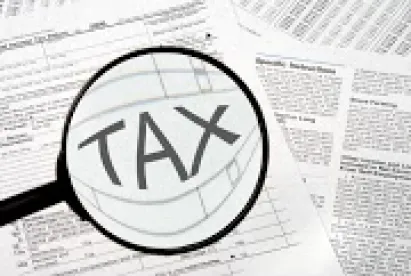As state and local governments (Issuers), and nonprofits and businesses that have borrowed through Issuers (Conduit Borrowers), face cash-flow difficulties, they may consider restructuring some of their tax-exempt obligations to reduce or defer payments on those obligations. The restructuring may be done in several ways, and there may be different tax consequences to the Issuer or Conduit Borrower depending on the option used. Of particular importance to the tax analysis are the rules that deem certain modifications of an obligation to be a reissuance of that obligation (the Reissuance Rules).
Ways in Which Payments May Be Lowered
Issuers or Conduit Borrowers may lower payments on their obligations by negotiating:
-
To extend the maturity of the obligation and reamortize the payments to produce lower periodic payments;
-
To lower the interest rate or reduce the principal to reduce the amount owed on the obligation and lower the amount of the periodic payments;
-
A period of forgiveness in which interest and/or principal is foregone for a period of time, reducing the amount owed on the obligation without reamortizing the obligation; and
-
A period of forbearance under which the lender agrees to stay collection or waive an acceleration clause or similar right. This does not reduce the amount of or principal and interest owed on the obligation; it just shifts the payments to later in the life of the obligation.
Potential Tax Issues
When the terms of an obligation are modified, that modification may result in a deemed reissuance of the obligation for federal tax purposes. This means that the outstanding obligation is treated as if it were refunded with a “new” issuance of bonds, generally on the date that there is an agreement to make the change. As with any tax-exempt refunding of a tax-exempt obligation, the Issuer will need to determine that the “new” bonds satisfy the requirements to be tax-exempt bonds. This analysis may require certifications, calculations and diligence, particularly when the modification results in a reissuance.
Other ramifications of a modification if there is a reissuance may include:
-
A new public (TEFRA) notice, hearing, and approval may be required, depending on the type of tax-exempt obligation
-
An issuer needing to file a new information return – Form 8038 or 8038-G – with the Internal Revenue Service for the “refunding bonds”
-
Some types of bonds – such as direct-pay build America bonds – that pay taxable interest to the holder; additionally, the Issuer, who would receive a subsidy from the United States for a portion of the interest it pays to the holder, would lose their status as build America bonds because such bonds may no longer be issued.1
Whether or not there is a reissuance, it is likely that the bond documents may require an opinion from bond counsel as to the tax and other consequences of any modification. Depending on the nature of the modification, this opinion may be a “no adverse effect” opinion or a full new tax opinion.
It is important then for Issuers to identify when modifications are being considered and to consult with bond counsel as early as possible on what the tax ramifications will be of the proposed modification.
Modifications That Cause a Reissuance
Generally, modifications to the terms of the obligation result in a reissuance of the obligation if the modification is significant.
What is a Modification?
A modification, for this purpose, is any modification of a legal right or obligation of the issuer or the holder of the obligation – other than a modification that occurs by operation of the terms of the debt instrument. Not all changes are considered modifications for this purpose, such as instances including:
-
An issuer’s failure to pay the amount owed on the obligation;
-
An agreement by the holder of the obligation to stay collection or waive an acceleration clause or similar right, for a period of two years – or longer, in certain cases, including if ongoing negotiations are underway – absent a written or oral agreement to alter the terms of the obligation; and
-
A party to the obligation fails to exercise an option to change the term of the obligation, such as the option to raise interest rates upon nonpayment.
When is a Modification Significant?
Generally, the significance of a modification is determined by considering whether, under all the facts and circumstances known at the time of such determination, the modification(s) are economically considerable. If a series of modifications is made, all modifications are tested together to determine whether, as a whole, they are significant. There are special rules that apply for this purpose, including:
-
If the modification(s) changes the yield on the obligation by more than the greater of 0.25% or 5% of the annual yield on the unmodified instrument, the modification is significant.
-
If the modification changes the timing of the payments (including any resulting change to the amount of the payments) on the obligation, the change is significant if it results in a material deferral of the scheduled payments.
-
Deferrals can occur through an extension of the maturity or deferral of payments prior to maturity.
-
Material deferrals are based on facts and circumstances, such as the length of the deferral, the original term of the obligation, the amount deferred, and the time between the modification and the actual deferrals.
-
Deferral of one or more scheduled payments is not material if the deferred payments must be paid no later than the lesser of five years from the date the first deferred payment was scheduled to be made and 50% of the original term of the obligation.
-
-
If the modification changes the payment expectations by substantially enhancing or impairing the obligor’s capacity to make its payments on the obligation, it is a significant modification.
There are other special rules that apply, for example, when there is a change in obligor or a change in the priority of the obligation relative to the Issuer’s other obligations changes.
The Obligation Must Remain a Debt for Federal Tax Purposes
One final point to keep in mind when modifying the obligation is that a tax-exempt obligation must be debt for federal tax purposes. While an instrument may be labeled a debt, if the substance shows that the instrument is not debt, i.e., is actually equity, it cannot be a tax-exempt obligation. Whether an instrument is debt as compared to equity is a highly factual analysis, and the analysis should be done in consultation with bond counsel. However, as a general rule changes that significantly extend the maturity in a manner that would make payment on the modified obligation questionable or a change to the payment terms that make payments highly contingent on the revenues of the obligor are red flags that should be carefully considered. Such an example:
-
Issuer is facing difficulty meeting its payment obligations on bonds.
-
The bonds have a remaining term of 20 years, with an original 30-year term, plus level debt service payments.
-
Issuer negotiates with the holder, a bank, to extend the maturity on the bonds for 10 years, making it a 40-year issuance, and reamortizes the debt service on the bonds, retaining level debt service payments, thereby deferring payments on the bonds.
-
Such a change is not pursuant to the terms of the bonds and, accordingly, it is a modification, as no other changes are made to the terms of the bonds, and their yield did not change.
-
The issuer or borrower will need to consult with bond counsel to determine whether, under the facts and circumstances known at the time of such determination, the deferral of the payments is material; the “safe harbor” does not apply.
In such an example, consideration should also be given to whether the extension substantially impairs or enhances the issuer’s ability to pay the debt service on the bonds. Alternatively, the issuer may be able to negotiate a reduction in the interest rate on the bonds and thereby reduce the payments. In this case, there would be a change in the yield on the bonds that would need to be tested to determine if it exceeds the greater of 0.25% or 5% of the annual yield on the unmodified instrument.
If there is a reissuance, a Form 8038 or 8038-G will need to be executed by the issuer and filed. In addition, if this is a private activity bond, a TEFRA notice, hearing, and approval will be required if the weighted average maturity is extended. An opinion may need to be delivered as to whether the interest on the reissued bonds (which are new bonds for federal income tax purposes) is excludable from federal income tax. In addition, in the case of a reissuance, if the issuer or borrower has earned rebatable arbitrage on the gross proceeds of the bonds, a final rebate calculation and payment must be made with respect to the bonds to date, because they are treated as retired for federal income tax purposes.
1 In determining whether an outstanding tax-exempt obligation remains tax-exempt upon reissuance, we have the benefit of Notice 2019-39 for certain types of bonds. This Notice allows for current refunding of certain targeted bond programs even though such refundings were not expressly provided for in the statute authorizing such programs. In addition, even if certain bonds may no longer be issued, such as build America bonds, an Issuer may be able to refund those bonds with tax-exempt bonds.





 />i
/>i
